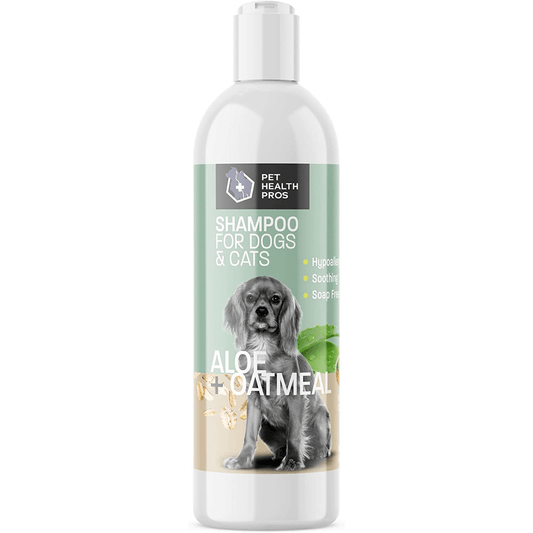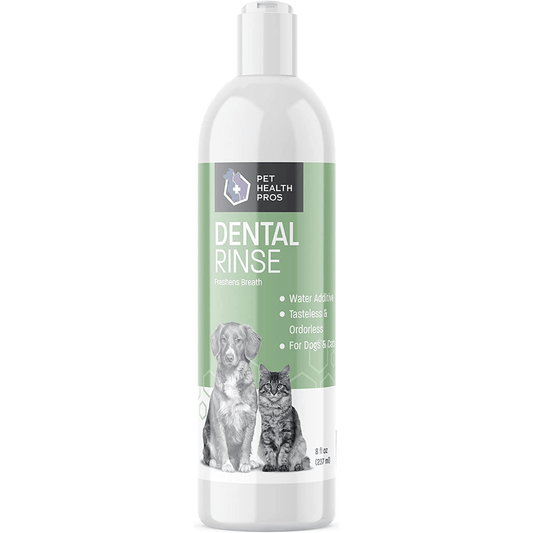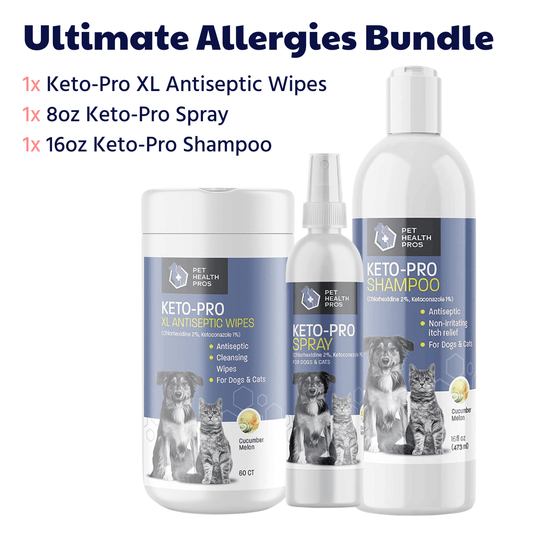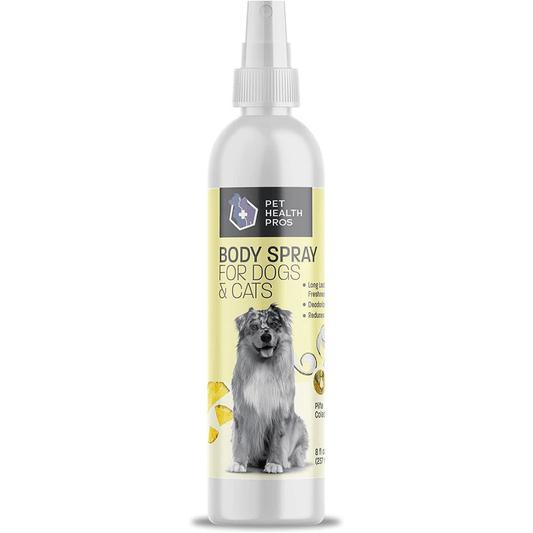Witch hazel has been a go-to natural remedy for humans for ages, but did you know it can also work wonders for your furry friends? This versatile plant extract can help with various common issues that dogs face, from skin irritations to minor injuries. In this article, we'll explore the many benefits of using witch hazel on dogs and how it can be a safe, effective addition to your pet care routine.
Key Takeaways
- Witch hazel is a natural astringent that can soothe skin irritations in dogs.
- It has anti-inflammatory properties that can help reduce swelling and redness.
- You can safely use diluted witch hazel for minor cuts and scrapes on your dog.
- Witch hazel can be a refreshing addition to dog grooming routines, acting as a natural flea repellent.
- Always consult your vet before introducing new remedies into your dog's care regimen.
Understanding Witch Hazel and Its Properties
What Is Witch Hazel?
Witch hazel isn't some spooky potion ingredient; it's a plant! Specifically, it's a flowering shrub or small tree called Hamamelis virginiana. You'll find it growing wild in North America. People have been using it for ages, and not just for Halloween-themed stuff. It's been a go-to natural remedy for all sorts of skin issues. The extracts from its bark and leaves are what you'll usually find in those bottles at the store. It's pretty cool how something so simple can have so many uses. You can find witch hazel products at most drug stores.
Natural Astringent Benefits
Witch hazel is a natural astringent, meaning it can help tighten tissues. This is why it's often used to reduce swelling and inflammation. Think of it like a gentle skin toner. It helps to remove excess oil and tighten pores, which can be super helpful for dogs prone to skin issues. It's also great for cleaning minor cuts and scrapes because it helps to stop bleeding. Plus, it can soothe irritated skin after a bug bite. It's a pretty versatile tool to have in your pet care kit.
Anti-Inflammatory Properties
Witch hazel isn't just an astringent; it also has anti-inflammatory properties. This means it can help reduce redness, itching, and swelling. The plant contains compounds called tannins, which are responsible for these effects. When applied to the skin, witch hazel can help calm down irritated areas, making it a great option for dogs with allergies or sensitive skin. It's like a natural way to tell your dog's skin to chill out. Here's a quick rundown of its benefits:
- Reduces inflammation
- Soothes itching
- Decreases redness
Witch hazel's anti-inflammatory action makes it a useful addition to your dog's grooming kit. It's a gentle way to address skin irritations without harsh chemicals. Always remember to dilute it properly before applying it to your dog's skin.
Common Ailments Treated with Witch Hazel on Dogs
Skin Irritations and Rashes
If your dog is dealing with itchy skin, witch hazel might offer some relief. It can be used to alleviate symptoms associated with various skin irritations. I've seen it work wonders on my friend's dog who gets seasonal rashes.
- Insect bites
- Mild allergic reactions
- Contact dermatitis
Hot Spots and Allergies
Hot spots are the worst! Witch hazel can be a helpful addition to your dog's care routine if they are prone to these nasty skin issues. Its anti-inflammatory and astringent properties can help reduce inflammation and dry out the affected area. It's not a cure-all, but it can definitely make your dog more comfortable.
Remember, it's always best to consult with your vet to determine the underlying cause of the hot spot or allergy and to create a comprehensive treatment plan.
Minor Cuts and Scrapes
For those little everyday injuries, witch hazel can act as a natural antiseptic. It helps to clean the wound and prevent infection. I always keep a bottle in my first-aid kit for quick clean-up after a park visit. Just make sure the cut isn't too deep or serious before using it. For anything major, a vet visit is a must!
How to Safely Use Witch Hazel on Dogs
Dilution and Application Methods
Okay, so you're thinking about using witch hazel on your dog? Great! But hold up, it's not as simple as just slapping it on. Dilution is key to avoid any irritation. You'll want to mix the witch hazel with water. A good starting point is a 50/50 mix, but if your dog has sensitive skin, go for even more water.
Application-wise, a cotton ball or pad works wonders. Just soak it in your diluted solution and gently dab it on the affected area. Avoid getting it in their eyes, mouth, or nose. For larger areas, you can use a spray bottle, but make sure your dog isn't scared of the spray. Always test a small area first to see how their skin reacts.
Frequency of Use
Don't go overboard with the witch hazel. Using it too often can actually dry out your dog's skin, which is the opposite of what you want. For most issues, applying it once or twice a day is plenty. If you don't see any improvement after a few days, or if the condition seems to be getting worse, it's time to call the vet.
Signs of Adverse Reactions
Keep an eye out for any signs that your dog isn't tolerating the witch hazel well. This could include:
- Increased redness or irritation
- Excessive scratching or licking at the area
- Swelling
- Hives
If you notice any of these, stop using the witch hazel immediately and wash the area with mild soap and water. If the reaction seems severe, like difficulty breathing or widespread hives, get to a vet ASAP.
It's always better to be cautious when introducing something new to your dog's routine. Even natural remedies can cause problems if not used correctly. When in doubt, a quick chat with your vet can save you and your furry friend a lot of trouble.
Witch Hazel for Dog Grooming
Okay, so you're probably thinking, "Witch hazel for grooming? Really?" Yeah, really! It's not just for first aid; it can be a surprisingly useful addition to your dog's grooming routine. Let's explore how.
Soothing Bath Additive
Adding witch hazel to your dog's bath can help soothe their skin, especially if they're prone to irritation. It acts as a mild astringent, which can help remove excess oil and dirt without being too harsh. Just add a small amount (like a cup for a large tub) to the bathwater. Make sure to avoid getting it in their eyes, though!
Natural Flea Repellent
While it's not a flea treatment, witch hazel can act as a mild repellent. It won't kill fleas, but they don't particularly like it. You can dilute witch hazel with water (50/50 mix) and spray it lightly on your dog's coat before going for a walk in areas where fleas are common. Reapply every few hours as needed. Remember, this is more of a preventative measure, not a solution for an existing infestation.
Refreshing Dog Wipes
Making your own dog wipes with witch hazel is super easy and can be a great way to freshen up your pup between baths. Here's a simple recipe:
- 1 cup of distilled water
- 1/2 cup of witch hazel
- A few drops of dog-friendly essential oil (like lavender or chamomile, but always check for safety first!)
- Strong paper towels or reusable cloth wipes
Mix the water, witch hazel, and essential oil in a container. Soak the wipes in the mixture, and store them in an airtight container. These wipes are great for cleaning paws after a muddy walk or wiping down their coat to remove dirt and odors.
Using witch hazel in grooming can be a gentle way to keep your dog clean and comfortable. However, always watch for any signs of irritation and discontinue use if you notice any adverse reactions. It's a good idea to test a small area first to see how your dog's skin reacts.
Comparing Witch Hazel to Other Remedies
Benefits Over Chemical Alternatives
When your dog is dealing with skin issues, it's easy to reach for the strongest-sounding treatment. But sometimes, the gentler approach is better, especially when it comes to avoiding harsh chemicals. Witch hazel offers a natural alternative that can be less irritating for sensitive pups. Many over-the-counter treatments contain alcohol, fragrances, and other additives that can dry out the skin or cause allergic reactions. Witch hazel, especially alcohol-free varieties, can provide relief without these harsh side effects. It's worth considering witch hazel first, especially for minor irritations, to see if you can avoid the potential downsides of stronger chemical treatments.
Cost-Effectiveness
Let's be real, vet bills and pet supplies can add up fast! Witch hazel is a pretty budget-friendly option compared to many specialized dog care products. You can usually find a bottle of witch hazel at your local drugstore for just a few dollars, and a little goes a long way. This makes it an accessible choice for pet owners who want to try a natural remedy without breaking the bank. Think about it: a single bottle could last for several treatments, whereas some prescription medications or specialized shampoos can be quite expensive and might only address one specific issue. For common problems like minor skin irritations or cleaning small cuts, witch hazel can be a cost-effective first step.
Environmental Impact
We all want to do our part to keep the planet healthy, right? Choosing natural remedies like witch hazel can be a small but meaningful way to reduce your environmental impact. Many conventional pet care products contain synthetic chemicals that can end up polluting waterways and harming wildlife. Witch hazel, being a plant-derived product, is generally more biodegradable and less likely to cause environmental damage. Plus, you can often find witch hazel in simple, recyclable packaging. It's not a perfect solution, but opting for natural alternatives whenever possible can help minimize your ecological footprint as a responsible pet owner.
Using witch hazel is not just about saving money or avoiding chemicals; it's also about making choices that align with a more sustainable lifestyle. By choosing natural options, you're contributing to a healthier environment for both your pet and the planet.
Consulting Your Veterinarian
When to Seek Professional Advice
While witch hazel can be a helpful home remedy for minor issues, it's important to know when a vet visit is needed. If your dog's condition worsens, doesn't improve after a few days of witch hazel treatment, or if you notice signs of infection (like pus, increased redness, swelling, or fever), it's time to consult your vet. Also, for deep wounds, severe burns, or allergic reactions, skip the home remedies and head straight to the clinic. It's always better to be safe than sorry when it comes to your furry friend's health.
Integrating Witch Hazel into Treatment Plans
Think of witch hazel as a potential addition to, not a replacement for, veterinary care. If your vet diagnoses a condition and prescribes medication, ask if witch hazel could be used alongside the treatment. Sometimes, it can help soothe the skin and reduce inflammation, making your dog more comfortable. However, always follow your vet's instructions and never stop prescribed medication without their approval. It's all about finding a balanced approach that works best for your dog.
Understanding Your Dog's Unique Needs
Every dog is different, and what works for one might not work for another. Factors like age, breed, existing health conditions, and allergies can all influence how your dog reacts to witch hazel. For example, dogs with sensitive skin might need a more diluted solution, or a different remedy altogether. Before using witch hazel, have a chat with your vet about your dog's specific needs and potential risks. This way, you can make sure you're using it safely and effectively.
It's easy to get caught up in the idea of natural remedies, but remember that your vet is the expert. They have the knowledge and experience to diagnose and treat your dog's health issues properly. Witch hazel can be a useful tool, but it's just one piece of the puzzle. Always prioritize professional veterinary advice for the best possible care.
User Experiences and Testimonials
Success Stories from Dog Owners
It's always good to hear from people who've actually used a product, right? Well, when it comes to witch hazel, lots of dog owners have shared their experiences, and many are pretty positive. Some folks have seen real improvements in their dog's skin conditions after using witch hazel.
- One owner mentioned how witch hazel helped clear up a persistent rash on their dog's belly after nothing else worked.
- Another said it was a lifesaver for their dog's itchy paws during allergy season.
- And yet another shared that it helped soothe their dog's skin after a run-in with some irritating plants.
It's important to remember that every dog is different, and what works for one might not work for another. But these stories do give you a sense of how witch hazel can be a helpful tool for managing certain skin issues in dogs.
Before and After Comparisons
Seeing is believing, right? While I can't show you actual pictures here, many dog owners have documented their dog's progress using witch hazel with before and after photos. These comparisons often highlight a noticeable reduction in redness, swelling, and irritation. For example, some owners have shared photos showing hot spots that were angry and inflamed before treatment, and then significantly calmer and less irritated after a few days of witch hazel application. It's these kinds of visual results that can really convince someone to give it a try. Of course, it's important to manage expectations and remember that witch hazel might not be a miracle cure for every situation, but these before and after comparisons can be encouraging.
Community Recommendations
Online forums and social media groups dedicated to dogs can be a goldmine of information. When it comes to witch hazel, you'll often find threads where people are sharing their experiences and recommending it to others. It's common to see people asking for advice on how to deal with their dog's skin issues, and witch hazel frequently comes up as a suggestion. People often share tips on how to use it, what brands they prefer, and what dilution ratios they've found to be most effective. It's a great way to get a sense of how other dog owners are using witch hazel and whether it might be worth trying for your own furry friend. Just remember to take everything with a grain of salt and do your own research before trying anything new.
People love sharing their stories about how our service has helped them. From making their lives easier to solving tough problems, our users have amazing experiences to tell. If you want to see what they say and how we can help you too, visit our website today!
Wrapping It Up: The Natural Benefits of Witch Hazel for Dogs
In conclusion, witch hazel can be a handy natural remedy for various issues your dog might face. From soothing skin irritations to helping with minor cuts and scrapes, it offers a gentle alternative to harsher chemicals. Just remember, it's always smart to check with your vet before trying something new, especially if your dog has specific health concerns. With a little care and the right approach, witch hazel can be a great addition to your dog's wellness routine.
Frequently Asked Questions
What is witch hazel and how is it used for dogs?
Witch hazel is a natural extract from the bark and leaves of the witch hazel plant. It's often used for its healing properties, especially for skin issues in dogs.
Can witch hazel help with my dog's itchy skin?
Yes, witch hazel can soothe itchy skin and reduce irritation. It acts as an astringent, helping to calm the skin.
Is witch hazel safe for dogs?
Witch hazel is generally safe for dogs when used correctly. However, it's important to use a diluted version and to avoid products with added alcohol.
How do I apply witch hazel to my dog?
You can apply witch hazel with a cotton ball or a clean cloth. Make sure to gently dab it on the affected area.
How often can I use witch hazel on my dog?
You can use witch hazel on your dog as needed, but it's best to limit use to avoid skin sensitivity. Monitor your dog's skin condition.
What should I do if my dog has an adverse reaction to witch hazel?
If your dog shows signs of irritation or an allergic reaction, stop using witch hazel immediately and consult your veterinarian.








